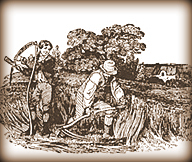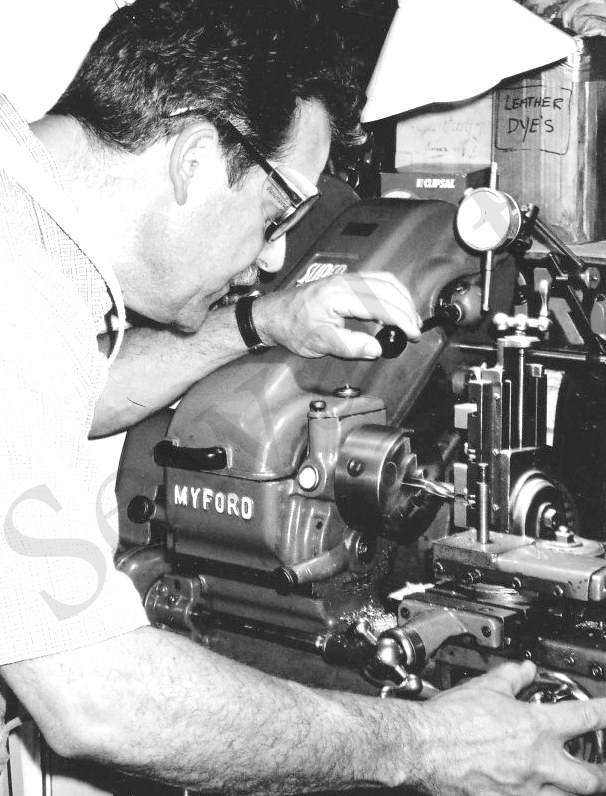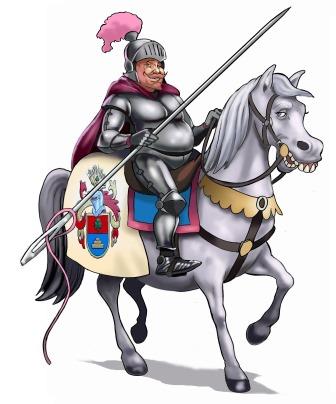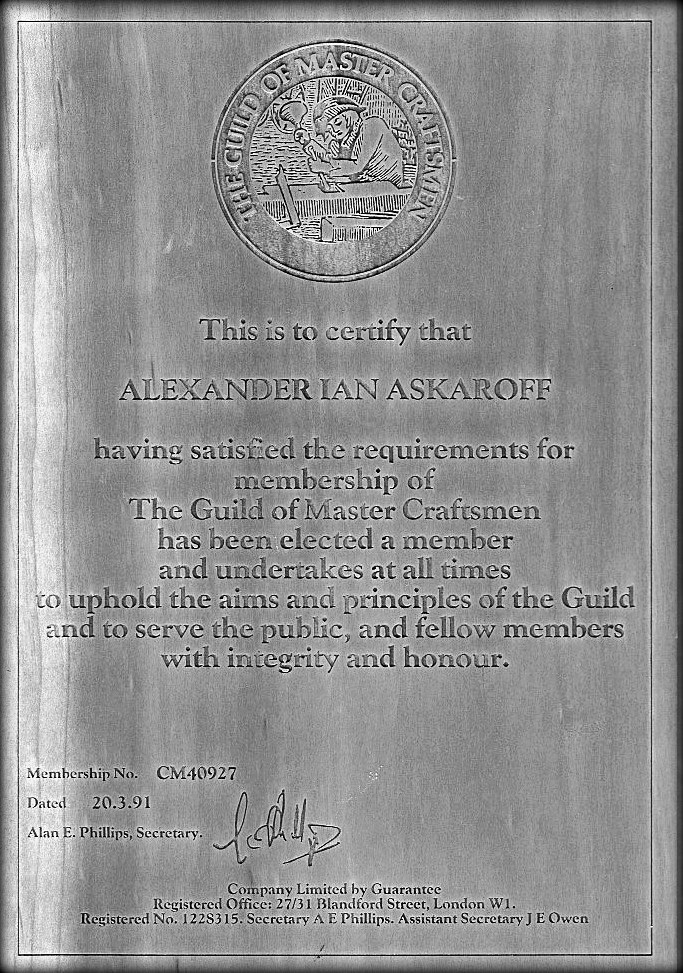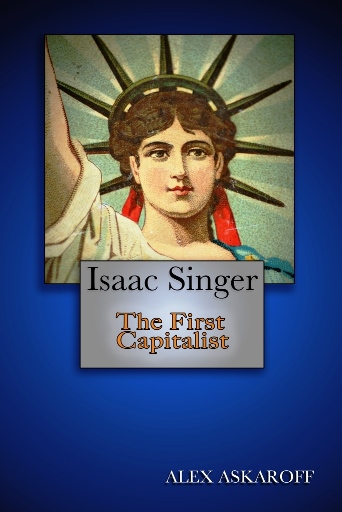|
||||
|
|
||||
|
The Master Craftsmen 'Integrity & Honour' Boiled down to basics
Guilds were made up of merchants and craftsmen who were the life blood of any village or town and they would ply their skills and wares on market day. In larger towns they may even have a shop, workshop or a permanent premises. The merchant guilds and craft guilds managed the entire trading within the town boundary. Today many older towns still have guild halls smack in the centre of town where deals would have been struck on market day. Market day was the most important day of the week and some towns still have market days protected by 'royal approval' or 'charter', such as Hailsham in East Sussex. On these days merchants and traders would fill the streets and centres with their goods and offer their skills to the public. It was here on these bustling streets that the master craftsman emerged at the very top of his profession, demanding the highest pay for his hard earned skills. But where did he start? The Apprentice Merchants and craftsmen often took on apprentices who would work for little more than board and keep. Sometimes, if it was a valuable profession, like a wheelwright or blacksmith for example, the parents would actually pay the craftsman to keep and train their child. The closest resemblance today may be the intern who works at business for free to learn a skilled trade. If their child became a skilled craftsman he would have a trade that would last him his lifetime and feed his family. From the blacksmith to the cutler, the arrowsmith to the barrel maker, all craftsmen were highly appreciated in their area and were essential for a thriving community. Apprenticeship The child's apprenticeship would normally last five years but may have been longer. In the case of a stone mason in Norman England the lad would serve a seven year apprenticeship, sometimes going on to work on a single cathedral for his entire life. Eventually he could become a master mason. After the invention of the Gutenberg printing press, a typesetter (who had to learn to spell backwards) would have a minimum seven year apprenticeship. A squire would start his working life at the age of seven eventually becoming his knight's armour bearer and personal assistant, and you thought PA's were new! In my case I enrolled in a pre-diploma engineering course at 'The College of Knowledge' (Eastbourne College of Further Education), then moved onto the diploma course. At the end of four years I gained my Ordinary National Diploma, OND. The option was open to gain the Higher National Diploma, HND, at university. However, I was needed at the family business and spent the next 10 years learning my trade on the factory floor before starting my own company, Sussex Sewing Machines in 1989. In olden days during this 'training' period, the young apprentice would be given food and often lodging. He would do odd jobs and save for his tools, which he would keep for his working life. Training was often paid for by the parents or a wealthy member of a family. An apprentice was often paid nothing, AND had to pay their teachers! This makes a lot of sense when you think about it. Imagine for a second how much trouble an apprentice blacksmith could have been! The Journeyman Once the lad had finished his apprenticeship they would often become a journeymen. Now this is not quite as it sounds. To me it sounds like someone who makes his living on the road 'journeying' from one place to another looking for work. Wrong. The word comes from the French, 'Journee', meaning 'day'. And a journeyman would be a trained and skilled apprentice who, after completing his apprenticeship, would start to be paid, 'by the day', for his work. This would be his first wages for many years and a sign that he was on his way to becoming a skilled craftsman in his own right. The Master Craftsman
At the top of this medieval hierarchy would be the 'master craftsmen', a seasoned specialist in his trade, be it thatching or carpentry, metal or wood working. Each trade gained its respect and in medieval times no trade was higher sought of than the armourer, a skilled blacksmith who specialised in knights armour. It is said that one suit of armour would cost the equivalent today of an average size house! Over the centuries the armourers trade moved from knights armour to other weapons and the gunsmith was born.
Guild Marks- Many skilled craftsmen started marking or stamping their goods. These unique marks showed each makers work. They stamped or marked their brand on their goods, much like a cattle brand. This extra mark proved profitable for the craftsman as people could seek out their goods. As marks became more popular, they were often counterfeited (much like today with expensive products). Craftsman who were part of a guild (which by 16th Century Britain, were the majority of skilled craftsmen) referred to these marks as 'Guild Marks' and were fiercely protected by the local guilds. Counterfeiting a Guild Mark could lead to the removal of the forgers hand! This basic mark evolved into a badge and later into a logo and we all know how much people pay for a flashy logo! Town Guilds Guild members were highly respected individuals who came together for business and for the good of their community and the very best of the members would be accepted into their various guild as as a Master Craftsman. Town Guilds also protected the community from itinerant or travelling workmen who could take the livelihoods away from the local people and have a devastating affect on the community. During times of plague, where huge numbers of skilled workers died, guilds used their contacts in their part of the country to provide skilled craftsmen to the places that needed them most. A bonus was that they also made sure that the craftsmen were paid a wage that reflected their skills. During times of plague wages amongst workers doubled and skilled workers almost tripled their pay. Strangely, for the survivors, it was a time of plenty. As you can see guilds became of huge importance to, not only local communities, but the whole country. Royal Approval Guilds became so important that they even commanded 'royal approval'. By the 16th Century guilds protected, organised, regulated, enforced and controlled the trade within most town boundaries. Guilds became a badge of honour that stood for quality-assurance and was accepted as a mark of excellence. The most similar thing we have today is the BSI, British Standards Institution, who currently work to different codes and levels depending on the situation and job. Though excellent, BSI could never hope to equal the years of expertise required to become a master craftsmen. In recent years the ancient skills of the guilds, and the master craftsmen, have been harder to protect and encourage. Trades like the wheelwright and stone mason have remained hardly changed for thousands of years. A stone mason working on the pyramids in Egypt, thousands of years ago, would use similar shaped tools as used today, they may not be tungsten tipped but a mason of old would recognise the tools in a heartbeat. In olden days the stone mason and blacksmith, who sharpened the tools, worked hand in hand. Some of these disappearing skills like tanners won't be missed, as it was hard and stinky work, so bad in fact that a tanner always married another tanner as they were the only ones who could put up with the smell of urine! In the last years our world has changed beyond all recognition, all that said, true craftsmanship, integrity and quality is still highly valued, and none more than a master craftsman, backed by his guild. Principles of the Guild of Master Craftsmen, To serve the public with integrity and honour. The Guild of Master Craftsmen, based in Lewes, offer small and large businesses useful support with legal problems and more common business difficulties. The Guild represents many trades and skills, from one man bands like mine, to large factories. The Guild of Master Craftsmen continually seek to support quality UK business and encourage more young people to enter the skilled trades, apprenticeships and crafts that are still available. The Guild of Master Craftsmen produce a glossy magazine dedicated to the skilled members of the Guild showing other members the skills that are protected and encouraged. Once you have passed the strict criteria for a master craftsman, Guild Members are given the opportunity to improve their sales, develop skills and exchange ideas. After a four year engineering course, a 10 year working apprenticeship on the factory floor and lifetime in the sewing trade Alex Askaroff, at the age of 34, was welcomed into the Guild of Master Craftsmen on the 12th of September 1991 and has worked to continually uphold the true and abiding skills of the guild. The Guild of Master craftsmen can be contacted at the address below
The Guild of Master Craftsmen Alex Askaroff Do let me know what you think or if you might like to add something to this page: alexsussex@aol.com
The Guild of Master Craftsmen Most of us know the name Singer but few are aware of his amazing life story, his rags to riches journey from a little runaway to one of the richest men of his age. The story of Isaac Merritt Singer will blow your mind, his wives and lovers his castles and palaces all built on the back of one of the greatest inventions of the 19th century. For the first time the most complete story of a forgotten giant is brought to you by Alex Askaroff.
Fancy a funny FREE read: Ena Wilf & The One-Armed Machinist Sir Sewalot, protector of the Sewalot Site.
|
||||

